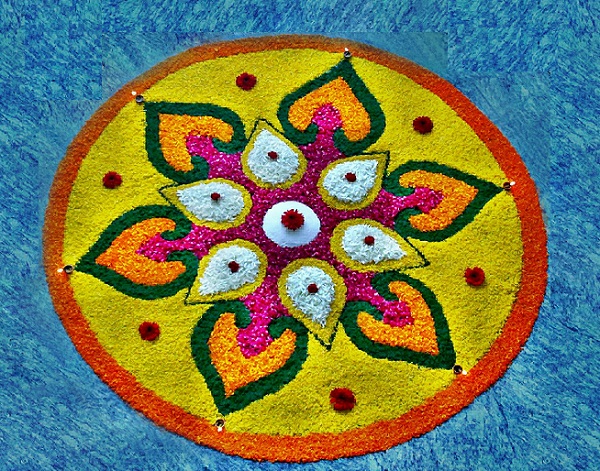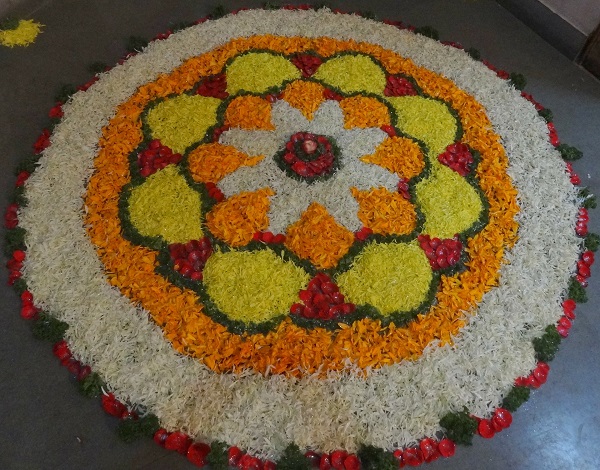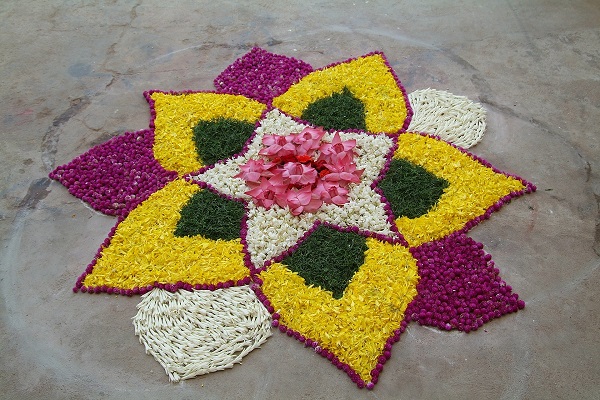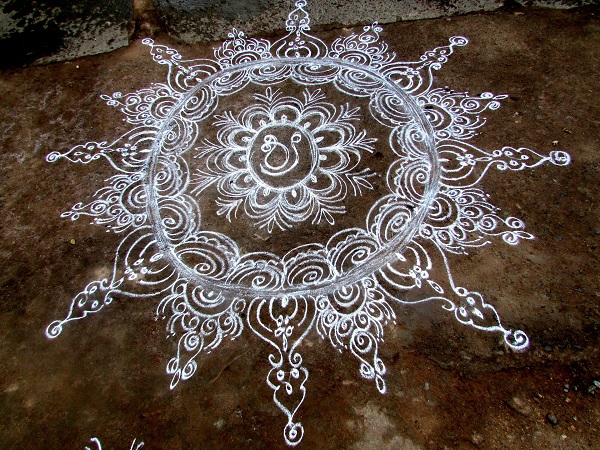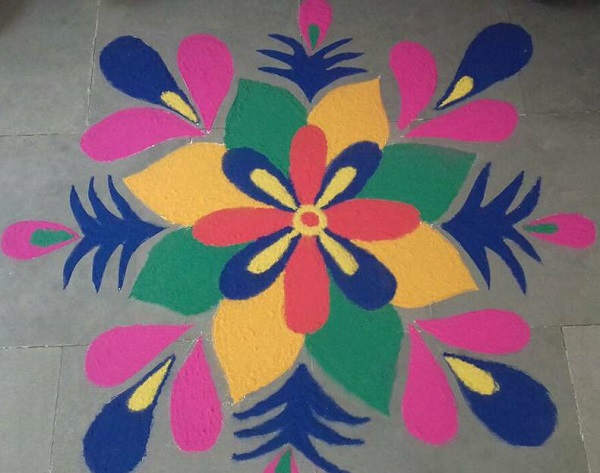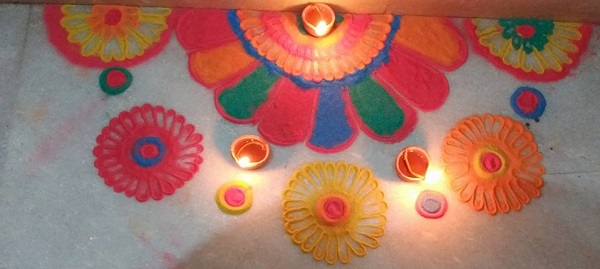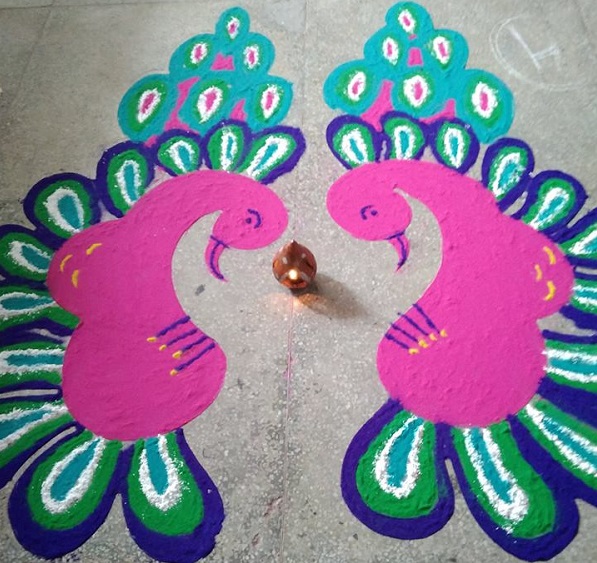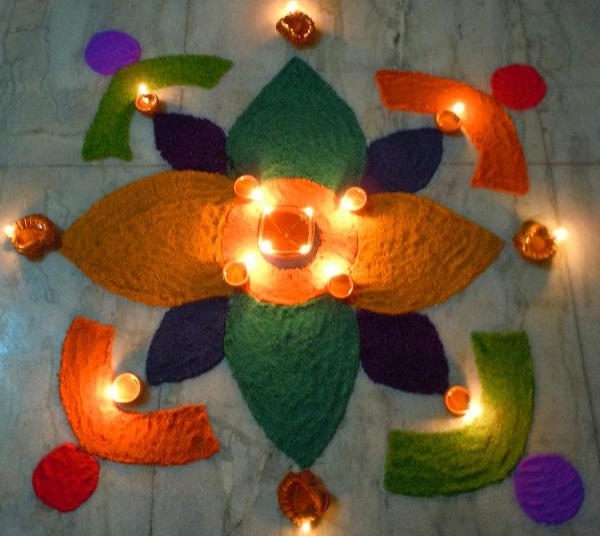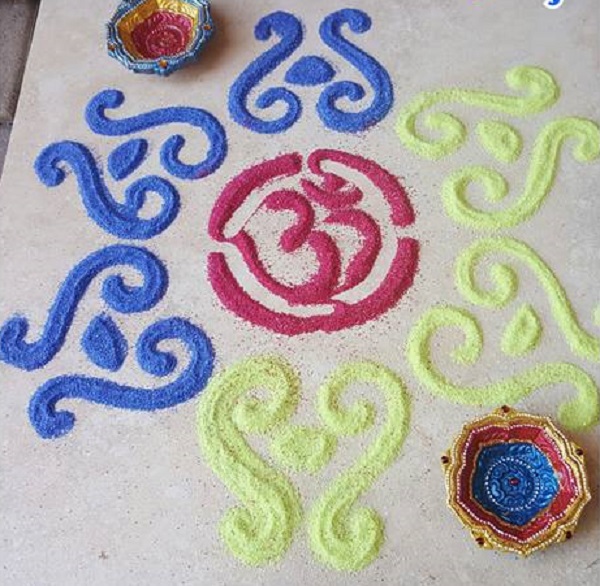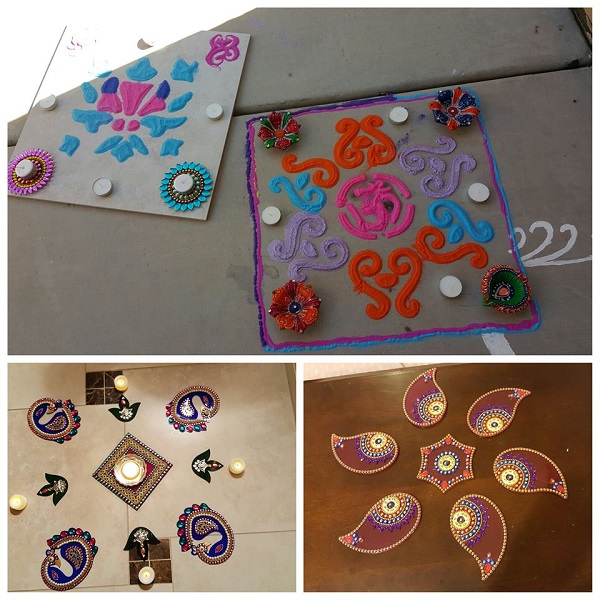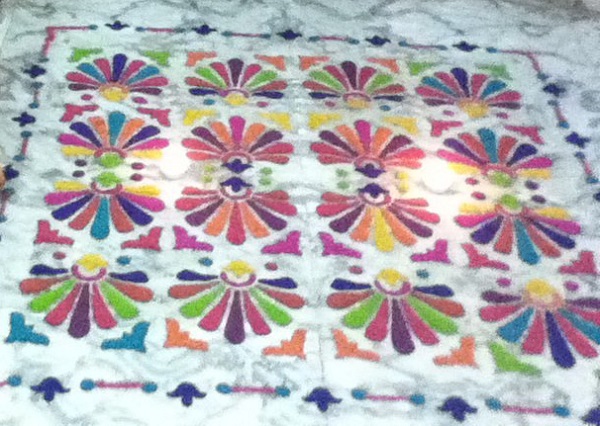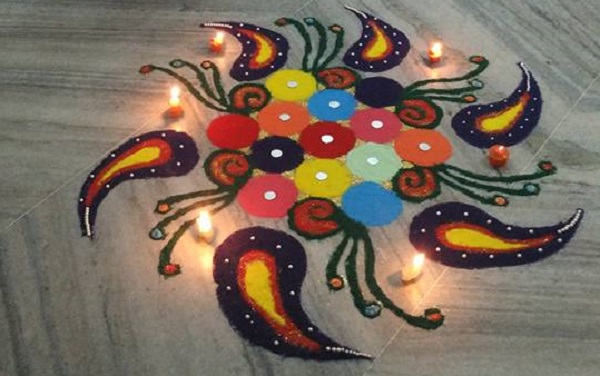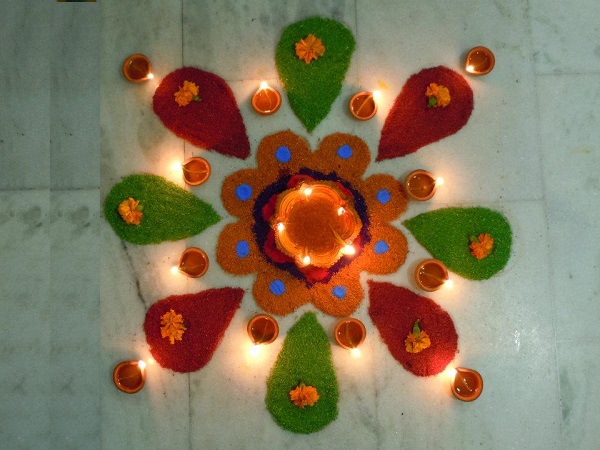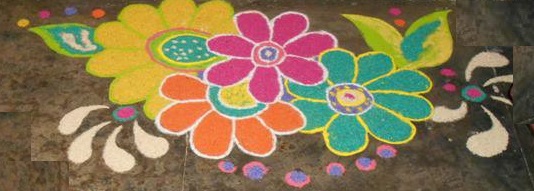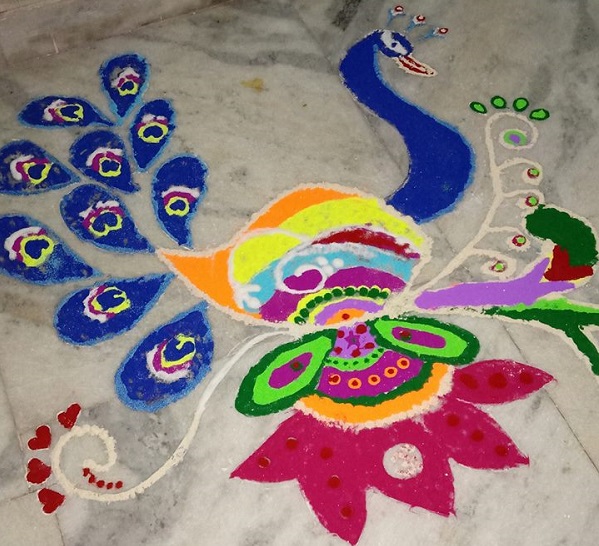Rangoli | Simple Rangoli Designs
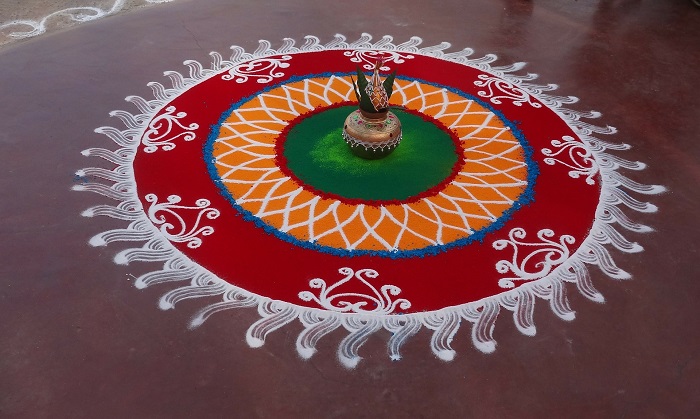
Rangoli is Hindu folk art, generally created on a floor on special festive occasions, like Diwali or Tihar, Onam, Pongal, Chhath Puja, and other Hindu festivals in India.
Rangoli is derived from the Sanskrit word “Rangavalli” where Rang means “color” and Avalli means “a row of colors“.
Origin
Rangoli is the most ancient traditional decorative art of India and a symbol of religious and cultural beliefs. Rangoli is also known as Kolam in South India, Chowkpurana in Northern India, Madana in Rajasthan, Aripana in Bihar, Alpana in Bengal.
Every region has its own style of drawing rangoli. In Kerala, people make rangoli with flowers called Pookalam. In West Bengal, the Alpana is made with rice paste. In south India, the rangoli is made with rice flour, however, the purpose of drawing Rangoli is the same. Rangoli figures and patterns are colorful and decorative designs made on the courtyard during the festival and are meant as a sacred welcoming area for the gods and guests.
The ancient ritual has been passed on through the ages, from one generation to the next thus keeping both the art form and the tradition alive. The main purpose of making Rangoli is to bring good luck.
According to a legend, the earliest treatise on Indian painting, a king and his kingdom were steeped in sorrow at the death of the high priest’s son. Everybody prayed to Lord Brahma who moved by the prayers, asked the king to paint a portrait of the boy on the floor so that he could breathe life into it.
And with that, the art of floor painting came to life. That is how rice, flour, and flowers were transformed into picturesque offerings to god in the form of floor painting.
In Indian cultures, all guests and visitors occupy a very special place, and a rangoli is an expression of this warm hospitality. In particular, the Diwali festival is widely celebrated with rangoli, since at this time, people visit each other’s homes to exchange greetings and sweets.
In a rangoli, powdered colors are sprinkled on cleaned and dusted floors to form decorations. Rangolis can be vivid, three-dimensional art complete with shadings or they can be the traditional plain, yet as beautiful as, two -dimensional designs. The colored powder is usually applied ‘freehand’ by letting it run from the gap formed by pinching the thumb and the forefinger.
In ancient times, rangolis were actually decorations made on the entrances and walls of houses to brighten up and add color to occasions being celebrated, like weddings, births, and significant religious days. They also signified a warm welcome for visitors. In fact in Maharashtra, India, housewives make them each morning. The designs would be simple and geometrical but could invoke symbolic forms. Oil lamps (diyas) would be placed in the rangoli to give it yet another dimension.
Thus, reflecting regional beliefs and aesthetics based on a common spiritual plane the art of floor painting is one that has survived all influences and retained and transmitted the spirit of Indian life.
The significance of Making Rangoli
Rangoli drawn at the entrance of a house have a calming effect on the visitors. It puts the visitor’s mind at ease, making him comfortable and happy.Rangoli absorb evil and negative energy from our surroundings and bring good luck. Hence Rangoli is not just an art but actually a science that was discovered by Indians thousands of years ago and has been made a part of the culture.
Rangoli Designs and Patterns
